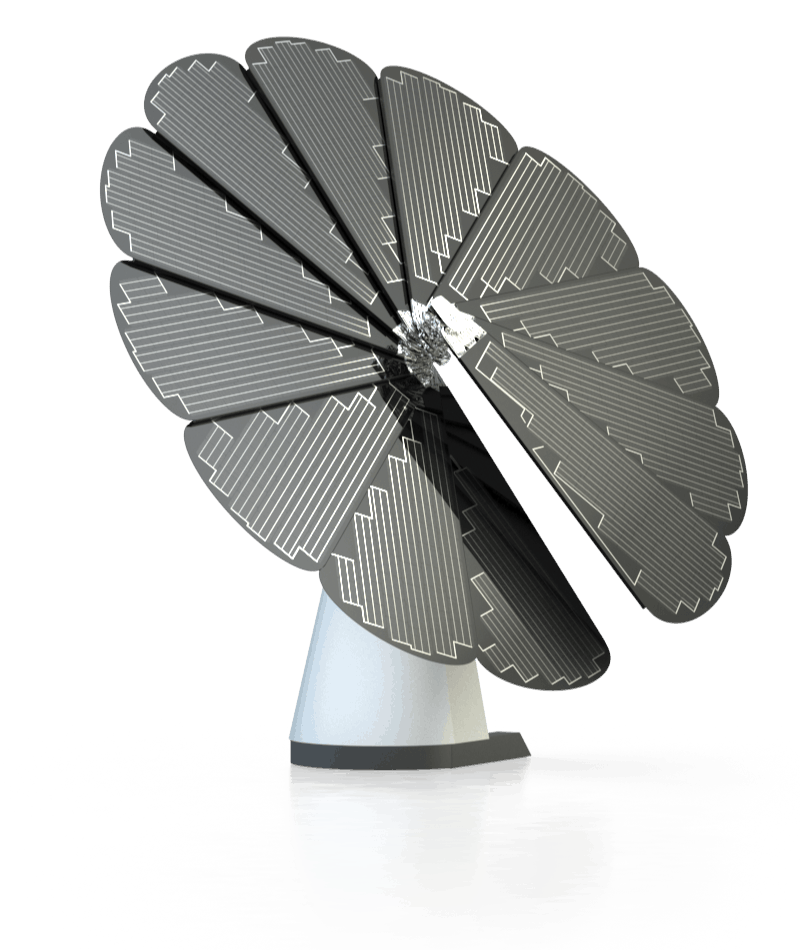When people think of solar energy, the image that often comes to mind is the sleek Smartflower solar system. It looks futuristic and beautiful, but installing one of these 2.5 kW units can cost up to $25,000.

On the other hand, there’s a lesser-known yet far more affordable option: the Concentrated Solar Power (CSP) dish. For around $2,000, these dishes can provide both heating and cooling for your home—completely powered by the sun. And while it may sound futuristic, this technology is closer to mainstream adoption than you might expect.
Why Heating and Cooling Matter
In the UK, domestic energy use is striking:
- 25% of the nation’s total energy is used in homes.
- 60% of that goes toward heating and hot water.
Globally, the picture is similar but with cooling: air conditioners and electric fans account for nearly 20% of electricity use in buildings—about 7% of all electricity worldwide.
Clearly, finding renewable ways to meet heating and cooling needs is crucial.
How CSP Dishes Work
Concentrated Solar Power dishes use mirrors or lenses to focus sunlight onto a receiver, heating a working fluid (such as thermal oil) to temperatures up to 400°C. This high-grade heat source can then be used in multiple ways.
There are several types of CSP dishes:
- Three-axis beam-down designs (e.g., the Ayman solar concentration dish).
- Multi-mirror dishes, which are simpler but effective.
- Two-axis tracking dishes, the cheapest option, particularly efficient near the equator.
Because mirrors and lenses are cheaper than photovoltaic (PV) panels, CSP dishes can be manufactured at a fraction of the cost. Recent innovations, like durable plastic mirrors and low-cost tracking systems, have made them even more affordable and reliable.
Borrowing Cooling Tech from IBM
Interestingly, part of this innovation traces back to IBM. Known for decades of experience in cooling high-performance data centers, IBM worked with Airlight Energy in 2014 on solar concentrator cooling systems. They developed water-based microchannel cooling that could handle up to 2,000 suns of solar concentration without overheating.
That same principle can be applied to CSP dishes, efficiently capturing intense solar heat and routing it where it’s needed.
From Heat to Comfort: Heating and Cooling Applications
Once the dish heats the thermal oil, the energy can be used in two main ways:
1. Heating
Straightforward and effective—the hot oil can circulate through a home’s heating system, providing space heating and reducing reliance on gas or electricity.
2. Cooling
This is where CSP dishes truly stand out, enabling solar-powered air conditioning through two methods:
- Vapour Absorption Cooling
Before modern compressor-based air conditioners, absorption systems were common. Powered by heat rather than electricity, they’re still used today in large facilities. CSP dishes can provide the necessary heat to drive this process, cooling indoor spaces while cutting energy use. - Desiccant Air Conditioning
A newer approach that uses hot air from the dish to regenerate a desiccant wheel—a device that removes humidity from the air. This not only cools but also dehumidifies, improving comfort and even enabling atmospheric water harvesting.
The Bottom Line
Concentrated Solar Power dishes are more than just a clever idea. They offer a practical way to:
- Heat your home in winter
- Cool and dehumidify in summer
- Slash energy bills year-round
By combining low-cost mirrors, advanced cooling technology from the computing world, and tried-and-tested thermal systems, CSP dishes demonstrate how solar energy can go far beyond electricity generation.
The future of home energy may not be panels on a roof—but dishes in the garden, quietly harnessing the sun for every aspect of comfort.
